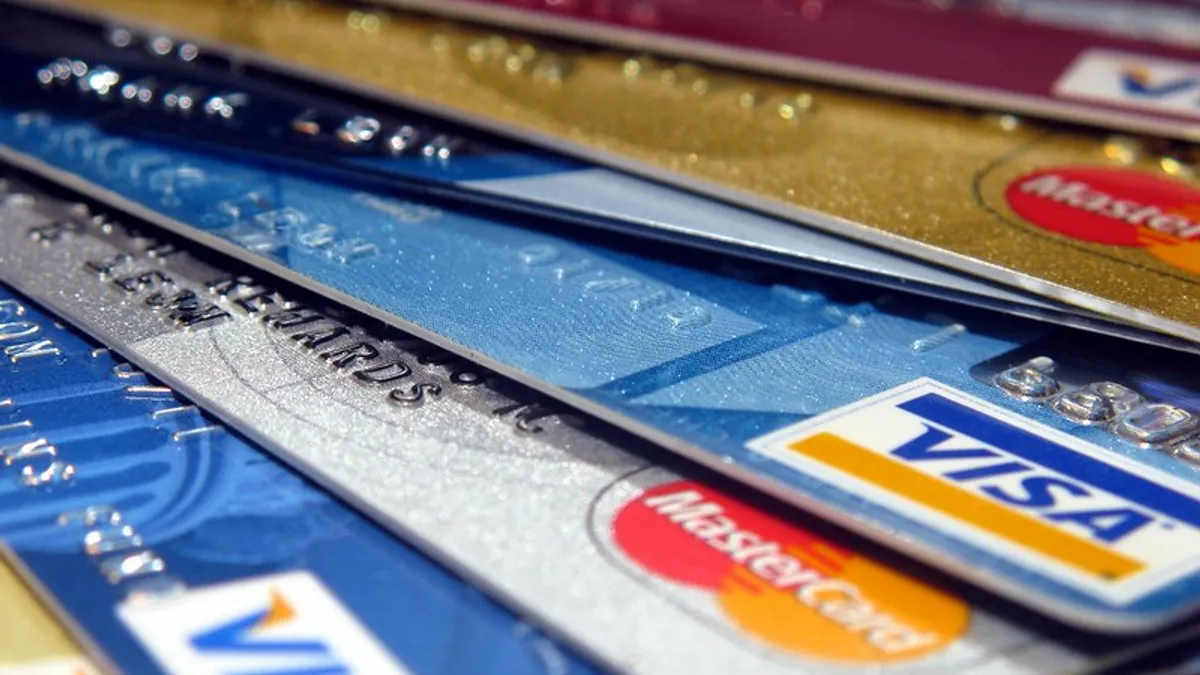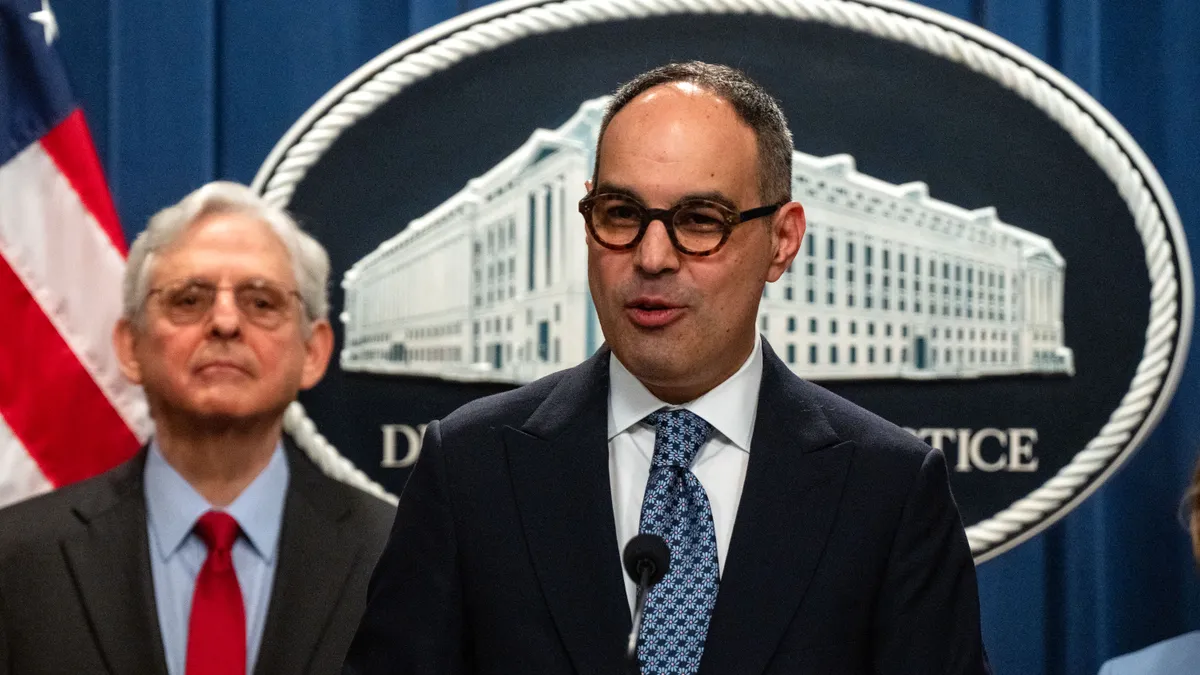Dive Brief:
- U.S. credit card balances rose $50 billion, or 4.6%, to $1.13 trillion outstanding during the fourth quarter of last year, relative to the third quarter, according to the latest New York Federal Reserve Bank quarterly report on household debt and credit. Overall household debt rose too, edging up 1.2% to $17.5 trillion.
- The percent of credit card balances that were more than 90 days in delinquency rose to nearly 10% at the end of last year, while the percentage of balances transitioning into delinquency of more than 30 days edged up over 8%, according to the Fed’s data, compiled by the Center for Microeconomic Data.
- Nonetheless, consumers won’t necessarily be able to keep tapping card funds. “Aggregate limits on credit cards increased modestly, by $74 billion (1.6%) in the fourth quarter, after ten consecutive quarters of meaningful increases,” that Fed report issued Tuesday said.
Dive Insight:
Americans’ outstanding credit card balances account for about 6% of their overall $17.5 trillion in household debt, with about 600 million credit card accounts as of the end of the year, the report showed.
The change in credit card debt over the past year, so compared to the year-earlier quarter, showed an even bigger jump than the quarter-over-quarter rise, surging by $143 billion, or 14.5%.
Just over 6% of credit card balances during the quarter transitioned into what the Fed labeled “serious delinquency” of more than 90 days. Young people, between 18 and 29, accounted for the highest percentage of balances in that condition, with nearly 10% of that age cohort fitting the description. Nonetheless, the percentage for that cohort is lower than it was two decades ago at about 12%, but higher than the 5% in late 2013.
“Credit card and auto loan transitions into delinquency are still rising above pre-pandemic levels,” Wilbert van der Klaauw, a Fed economic research adviser, said in a press release Tuesday accompanying the report. “This signals increased financial stress, especially among younger and lower-income households.”
Cardholders opting to carry card debt from one month to another are paying dearly for it, with interest rates generally at a 23-year high. The Federal Reserve has raised interest rates in recent years to tame inflation. On the positive side for consumers, the unemployment rate has remained low for about seven years, an Atlanta Fed Bank official noted at a conference this week. Still, U.S. economic growth is expected to slow this year due to higher interest rates.











